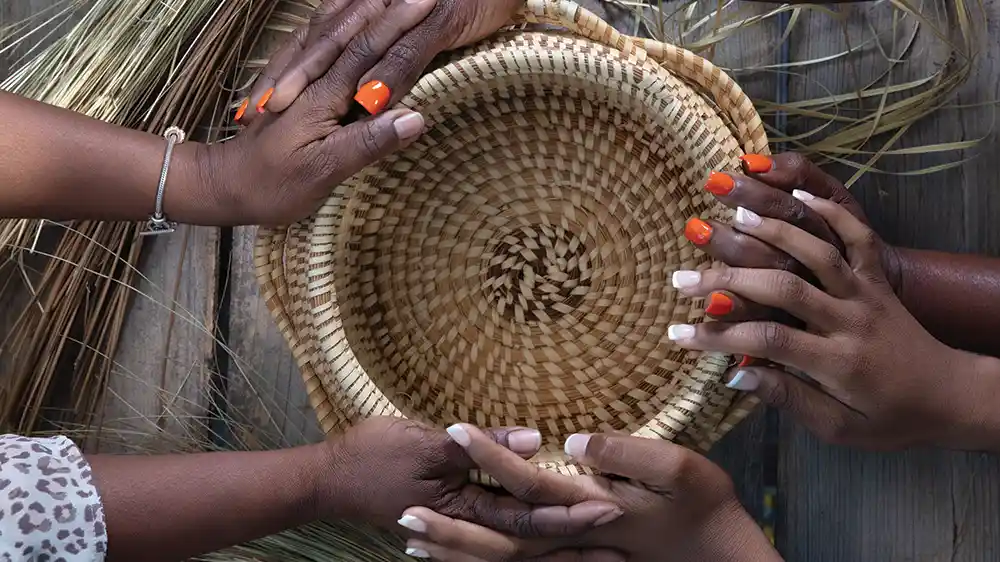
A family is constructed a lot like the famed sweetgrass baskets that decorate highways, homes and heritage sites all over the Lowcountry; both are made to be coiled so tightly that they could hold water. Charleston Women always aims to look between those tightly woven knots and unveil who the Charleston Woman is and uncloak what makes her so strong, so steeped in tradition and so inspirational.

We travel down a lot of different paths to do that, but when looking into the art of sweetgrass basket-making, we are looking at our roots. We are looking at the very beginnings, the backbone of who we all are if we live in the area now. We are all some part of what was and what will come. The baskets are a tradition sewn into history and into the very heart of South Carolina with all it ever was and will ever be.
Nearly identical to Shukublay baskets, which are native to Sierra Leone, the basket-making tradition arrived in the Lowcountry in the 1600s with West African slaves. The climate and landscape of coastal South Carolina and this part of Africa are remarkably similar. Along with the great knowledge of cultivating rice, Africans brought the design for functional fanner baskets used for winnowing. This made the process of separating the chaff from the rice effective. Other baskets were used for harvesting shellfish, vegetables and cotton. On this side of the pond, it was a marsh grass called bulrush — that was coiled, not weaved — into the baskets, a method that Gullah artists still use today.
Though the functionality of the basket is more a thing of the past, with time and technology discovering new ways to cultivate crops all the time, the artistry of the basket lives on as a reminder to all of us on what sacred soil we stand. It is a reminder to preserve a culture, to remember the past, to learn from where we’ve been and to celebrate those who are still here to practice the craft. It’s really about reflection, gratitude and finding beauty.
Wanda Lenhardt, her daughter Tanaisha Johnson and her granddaughter Za’Mauria Smith exemplify three generations of women devoted to keeping this artistic expression alive. Lenhardt said, “When I was a little girl, I was always hanging around my grandmother. She wanted all her grandchildren to know how to make the baskets. She waited on me to ask. So, one day I asked, and she taught me. It’s a gift of craft. Anything you imagine can be done with it.”
Perhaps that is one of the greatest fables hiding in the baskets. They prove that anything one can dream or hope for can be created. Adding to that idea, Johnson offered, “At first, I didn’t think I would be able to do it. I got frustrated. But now I feel confident, strong and courageous.”
Smith, the youngest of the three generations, just 11 years old, is learning the art now. She can make a starter basket, but is eager to learn more. Much like her great-great-grandmother did for her own grandmother, she wasn’t taught until she asked. It’s important to the family that the person learning wants to know the practice. Smith said, “Since they passed it on, I want to be able to pass it on when I grow up and have kids. My favorite subject in school is history. I want to know what happened before I was born.”
Perhaps young Smith said it best. She simply wants to know what came before her, then share it with those who will come after her. She wants to share the importance of the past with the aspirations of the future. She wants to keep turning those coils so tightly that they can hold all the hopes, all the dreams, all the lessons — all the water — that the world has to offer.
By Lorna Hollifield